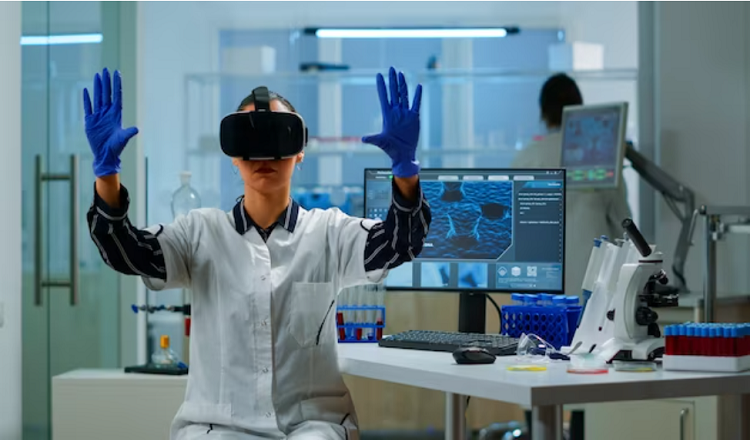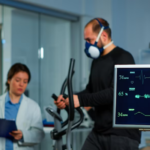
Greetings from the electro-medical technology world! The way we approach healthcare in the USA is changing as a result of this intriguing sector. We can anticipate a number of incredible developments and trends that will completely transform the healthcare sector in the upcoming years.
Utilising electronic tools and instruments to identify, treat, and keep track of medical issues is known as electro-medical technology. From the creation of the pacemaker through the development of the EKG machine, this technology has played a significant role in healthcare for many years. However, electro-medical technology innovation has increased recently, and we are now witnessing some exciting new discoveries that have the potential to revolutionise the way healthcare is delivered in the USA.
The development of new devices and technologies is important for the future of electro-medical technology, but so is coming up with novel applications for them that will enhance patient outcomes and lower healthcare costs. In the field of electro-medical technology, there are numerous trends and advancements to follow, ranging from telemedicine to artificial intelligence. So fasten your seatbelts and prepare to discover the fascinating world of electro-medical technology and its potential for the United States.
The USA’s current electro-medical technology situation
In the USA, electro-medical technology is currently at a very high level. For the diagnosis, treatment, and oversight of medical disorders, healthcare professionals use a number of electronic tools and instruments. Ultrasound devices, X-rays, CT scans, MRI machines, and electrocardiograms (ECGs) are some of the technologies that are utilised in healthcare the most frequently.
Even though electro-medical technology has advanced significantly in recent years, there are still some issues that must be resolved. Issues with device interoperability, patient data security, and regulatory compliance are a few of these. Healthcare providers and technology firms are collaborating to create new data exchange standards and protocols as well as new cybersecurity safeguards to address these issues. To guarantee that electro-medical technologies are secure, efficient, and in compliance with laws, regulatory authorities also regularly evaluate and update their policies.
Electro-Medical Technology Advances
In the USA, electro-medical technology is continually being improved, and these developments have the potential to revolutionise how healthcare is provided. The creation of wearable equipment that can track a patient’s vital signs in real-time is one of the most exciting advancements. These small, user-friendly devices can give doctors useful information that can aid in the more accurate diagnosis and treatment of medical disorders.
Robotics is a separate area of electro-medical technology advancement. Robotic surgical assistance is being used, which can help lower the risk of complications and enhance patient outcomes. Additionally, there has been a major advancement in the creation of implanted medical devices that can significantly enhance the quality of life for those with chronic medical illnesses, such as cochlear implants and artificial hearts.
These improvements in electro-medical technology are superior to those made thus far in that they are more complex, user-friendly, and patient-focused. They have the potential to greatly raise the precision and effectiveness of healthcare delivery, lower costs, and increase patient satisfaction.
Technology used in electromedicine and telemedicine
By enabling patients to get medical care remotely, without having to physically visit a doctor’s office or hospital, telemedicine is revolutionising healthcare delivery in the USA. Patients and medical professionals can communicate electronically through telemedicine using tools like messaging applications and video conferencing.
By enabling remote monitoring and diagnosis of medical disorders, electro-medical technology is playing a crucial role in supporting telemedicine. Wearable sensors, for instance, can monitor a patient’s vital signs and transmit that information to medical professionals in real-time, enabling the early identification of health conditions and prompt management.
There are potential and challenges in this sector, though. Some patients might not have access to or feel comfortable using the required technologies. The security and privacy of patient data conveyed via electronic communication technologies also raises questions. Telemedicine, on the other hand, offers the potential to improve access to healthcare, especially for patients in remote or underserved areas.
Electrical and electronic medical technology
The use of artificial intelligence (AI) in electro-medical technology, notably in the healthcare industry, is becoming more and more significant. Medical professionals can make better educated diagnoses and treatment decisions thanks to AI’s ability to quickly and reliably analyse large amounts of medical data. Medical imagery and signals can be used by AI systems to spot patterns and abnormalities that can help diagnose illnesses earlier.
Medical imaging, predictive analytics, and personalised medicine are some of the most exciting applications of artificial intelligence in electro-medical technology. AI can be used to create chatbots and virtual assistants that can assist patients in navigating the healthcare system and obtaining medical guidance and support.
AI in healthcare has a number of advantages, including increased diagnostic precision, quicker and more effective care delivery, and lower healthcare costs. By providing personalised treatment regimens based on unique patient data, AI has the potential to enhance patient outcomes. The ethical ramifications of employing AI in healthcare, particularly with regard to data privacy and patient autonomy, are a worry as well.
Issues with Regulation and Ethics
There are numerous ethical and regulatory concerns with electro-medical technologies in the USA. It can be difficult for regulators to strike a balance between the need to advance innovation and public access to new technologies. Healthcare practitioners must also traverse a complicated web of laws, rules, and moral requirements, particularly those pertaining to patient privacy and data security.
How to ensure the safety and effectiveness of electro-medical equipment is one of the main difficulties regulators face, especially as these devices become more sophisticated and complicated. In addition, there are worries regarding the security and privacy of user data as well as potential biases in the AI-powered gadgets’ algorithms.
For the creation, testing, and application of electro-medical technology, regulators and healthcare providers must come up with clear standards and rules. This may entail putting in place independent testing and certification programmes, putting in place data security safeguards, and creating moral frameworks to govern the application of new technologies in healthcare.
Conclusion
To sum up, electro-medical technology is developing quickly and has the potential to completely change how healthcare is delivered in the USA. We’ve talked about the condition of electro-medical technology today, the tools that are most frequently employed in healthcare, and the difficulties that these tools must overcome. Additionally, we have emphasised the ground-breaking discoveries that have the potential to revolutionise healthcare as well as the most recent developments in electro-medical technology.
We have looked at the application of telemedicine and artificial intelligence in electro-medical technology, as well as the potential advantages and drawbacks of doing so. We have also talked about the ethical and legal concerns that electro-medical technology raises, as well as how to handle these concerns to protect patient privacy.
Electro-medical technology has the potential to drastically affect how healthcare is delivered and patient outcomes in the future. Electro-medical technology has the potential to provide patients with healthcare that is more individualised, effective, and efficient with continuing innovation and investment. To guarantee that these technologies are used safely, morally, and in a way that maximises patient benefits, regulators and healthcare providers will need to collaborate as technology develops.
Read More You May Like:
- The Role of Electro-Medical Devices in Rehabilitation and Physical Therapy
- Understanding TENS Therapy: How It Works and Who Can Benefit
- Electrocardiography (ECG): Understanding Heart Health Through Electrical Signals
- Electroconvulsive Therapy (ECT): A Guide to the Controversial Treatment for Mental Illness
- Electroencephalography (EEG): The Brain-Monitoring Technology and Its Applications








